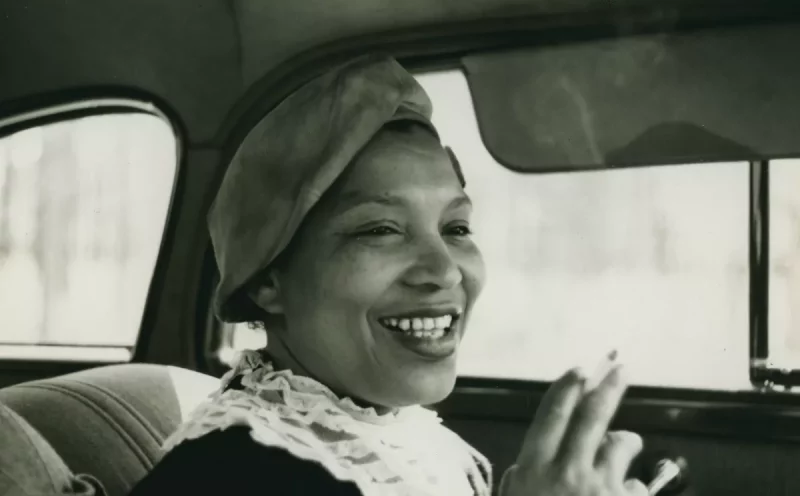How a new film captured Zora Neale Hurston’s radical authenticity
Share
Explore Our Galleries
Breaking News!
Today's news and culture by Black and other reporters in the Black and mainstream media.
Ways to Support ABHM?
By Chris Vognar, Los Angeles Times

Zora Neale Hurston may have been buried in an unmarked grave when she died in 1960, but her star has been rising, posthumously, ever since Alice Walker brought her back to public’s attention in the late 1970s. Hurston’s masterful 1937 novel “Their Eyes Were Watching God” is a staple of college reading lists. Her name has been dropped on TV series ranging from “The Sopranos” to “Godfather of Harlem.” She is widely seen as a trailblazer of Black feminism. And now she’s the subject of a new PBS “American Experience” documentary, “Zora Neale Hurston: Claiming a Space,” which premieres Tuesday on PBS and will be available thereafter on PBS.org.
She’s viewed largely through the lens of her fiction, particularly “Eyes,” the story of a young woman striving for authenticity and independence along with romantic love. But as the new film makes clear, Hurston’s work as an anthropologist was at least as important as her literary output. Traveling alone through the South in a Nash coupe in the ’20s, a gun on her hip, Hurston collected songs, folktales and life stories from Black communities seldom seen or heard. At a time when anthropology was generally viewed as a study of the other, Hurston immersed herself in the lives of her own people.
“I thought I kind of knew everything I needed to know about her,” says Cameo George, the film’s executive producer. “But she had a marked impact on anthropology, and how we study other cultures, and certainly African American culture. Once you understand that, and you think back to the books that you’ve read of hers, you really see that anthropology is an integral part of her literary voice.”
Hurston understood the power of names and produced her work under the oppression of Jim Crow laws.









Comments Are Welcome
Note: We moderate submissions in order to create a space for meaningful dialogue, a space where museum visitors – adults and youth –– can exchange informed, thoughtful, and relevant comments that add value to our exhibits.
Racial slurs, personal attacks, obscenity, profanity, and SHOUTING do not meet the above standard. Such comments are posted in the exhibit Hateful Speech. Commercial promotions, impersonations, and incoherent comments likewise fail to meet our goals, so will not be posted. Submissions longer than 120 words will be shortened.
See our full Comments Policy here.